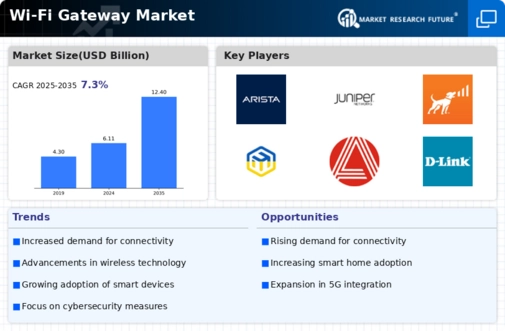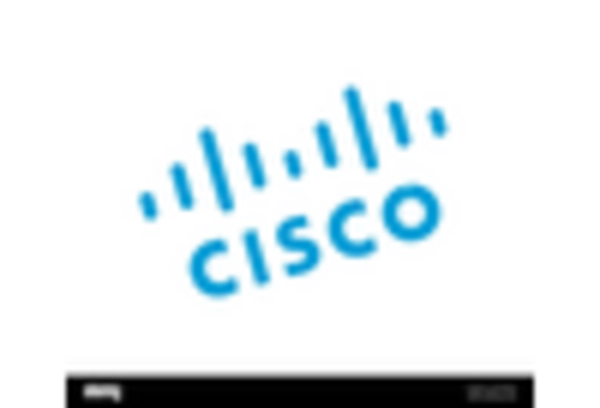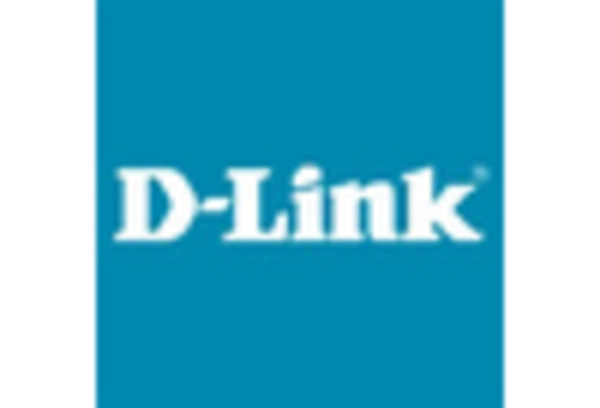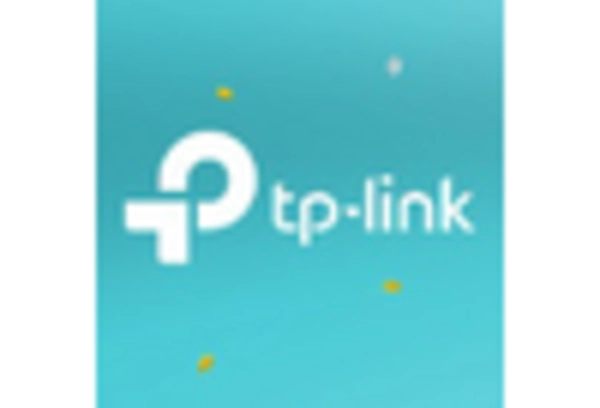Emergence of 5G Technology
The rollout of 5G technology is poised to transform the Wi-Fi Gateway Market significantly. With its promise of ultra-fast speeds and low latency, 5G is expected to complement existing Wi-Fi networks, creating new opportunities for gateway manufacturers. As 5G networks become more widespread, there will be a growing need for Wi-Fi gateways that can seamlessly integrate with these advanced networks. This integration will enable users to experience enhanced connectivity and performance, particularly in high-density environments. Analysts predict that the 5G market could reach a valuation of over 700 billion by 2025, indicating a substantial opportunity for Wi-Fi gateway solutions that can leverage this technology.
Increased Focus on Cybersecurity
As cyber threats continue to evolve, the emphasis on cybersecurity within the Wi-Fi Gateway Market is becoming more pronounced. Consumers and businesses are increasingly aware of the risks associated with unsecured networks, leading to a demand for gateways that offer enhanced security features. Manufacturers are responding by integrating advanced security protocols, such as WPA3 encryption and built-in firewalls, into their products. This focus on security is not only essential for protecting sensitive data but also for maintaining consumer trust. The market for secure Wi-Fi solutions is projected to grow, as users prioritize safety in their connectivity choices, thereby driving the development of more secure Wi-Fi gateways.
Expansion of Smart Cities Initiatives
The push towards smart cities is another critical driver for the Wi-Fi Gateway Market. Governments and municipalities are increasingly investing in infrastructure that supports smart technologies, including IoT devices, smart traffic management, and public Wi-Fi networks. This trend is expected to create a substantial demand for Wi-Fi gateways that can handle the connectivity needs of various smart applications. Reports suggest that the smart city market could reach a valuation of over 2 trillion by 2025, highlighting the potential for Wi-Fi gateway solutions to play a pivotal role in this transformation. As cities become more interconnected, the need for reliable and efficient Wi-Fi gateways will likely grow, driving innovation and competition in the market.
Growing Demand for High-Speed Internet
The increasing demand for high-speed internet connectivity is a primary driver of the Wi-Fi Gateway Market. As more consumers and businesses rely on the internet for daily operations, the need for robust and reliable Wi-Fi solutions has surged. According to recent data, the number of internet users has reached approximately 5 billion, indicating a significant market potential. This demand is further fueled by the rise of streaming services, online gaming, and remote work, all of which require stable and fast internet connections. Consequently, manufacturers are focusing on developing advanced Wi-Fi gateways that can support higher bandwidths and multiple devices simultaneously, thereby enhancing user experience and satisfaction.
Rise in Internet of Things (IoT) Devices
The proliferation of Internet of Things (IoT) devices is significantly influencing the Wi-Fi Gateway Market. With billions of devices expected to be connected to the internet in the coming years, the demand for Wi-Fi gateways that can support these connections is increasing. It is estimated that by 2025, there will be over 75 billion IoT devices globally, necessitating advanced networking solutions. Wi-Fi gateways must evolve to accommodate the unique requirements of IoT applications, such as low latency and high reliability. This trend is prompting manufacturers to innovate and develop gateways that can seamlessly integrate with various IoT ecosystems, thereby enhancing their market appeal and functionality.

















Leave a Comment